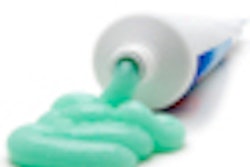Caries continues to rank as the most widespread public health issue for California children, according to the California Dental Hygienists' Association (CDHA).
The warning comes following a report from the Pew Center on the States, which identified California as being "off track" when it comes to addressing the dental needs of children.
"Poor oral care contributes to speech impediments, low self-esteem, and a wide range of health problems involving infections," said Ellen Standley, RDH, CDHA president. "It is unfortunate that one in four children has never even been to a dentist and that tooth decay is five times more prevalent than asthma."
The Pew Center issued a C grade to California, where more than 750,000 elementary school children had untreated tooth decay in 2006. But the CDHA says the number is now closer to 1 million youngsters.
According to the Pew Report, California falls short in key oral healthcare policy benchmarks:
- Only 27% of California drinking water supplies are fluoridated -- far less than the national average of 75%.
- Nationwide, the percentage of dentists' fees reimbursed by Medicaid is 60%, while California lagged behind with 34%.
"The dental hygienist can provide mothers of infants and young children with simple nutritional counseling to help prevent dental decay," Standley said. "We are a trusted and reliable source of information about everything from proper brushing to the safe use of bottles and sippy cups."
Additionally, disparities exist across race, ethnicity, and type of insurance when it comes to the length of time between dental care visits. Most dental practices don't accept Medicaid-enrolled children of any age, Standley said, and children are seen on an average of 10 times in a medical office before the first dental exam is ever scheduled.
"CDHA continues to make it a priority to raise awareness of pediatric oral health among policymakers, parents, and the public health community," Standley said. "The good news is that with knowledge and public education, we can make headway in reducing tooth decay in our children."



















